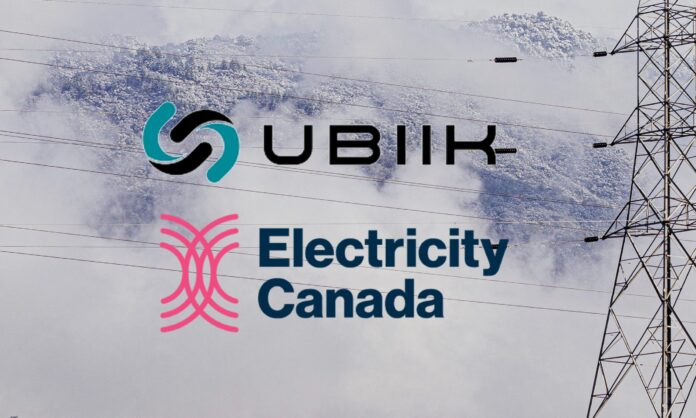Taiwanese advanced metering infrastructure (AMI) and private network provider Ubiik has convened a gang of chipset makers and module makers to develop a working supplier ecosystem around the new 1.8 GHz ‘utility’ band in Canada, reserved for power utilities. These include GCT, Semtech (Sierra Wireless), Sequans, and Sony Semiconductor Israel, which have committed to produce foundational hardware for 1.8 GHz AMI and IoT devices for the utilities market.
AMI specialist Itron has also said it will produce smart meters for use in the 1.8 GHz band. At the same time, Electricity Canada, representing the electric power industry in Canada, has held meetings about the same with the likes of Druid Software and Nokia, plus Itron, GE Vernova, and Ubiik itself. Ubiik and Electricity Canada have been working together since October last year to deliver private LTE networks for utilities in the 900MHz, 1.4GHz, and 1.8GHz bands.
Canadian electrical utilities have the sole right to use the local 1800-1830 MHz (1.8 GHz) band. But there is a lack of trade support, currently, for industrial 1.8 GHz AMI and IoT devices, for use in metering and grid infrastructure. But equipment vendors have so far failed to produce equipment for the band due to its “lack of designation as a 3GPP band and the perceived size of the Canadian utility market for telecom infrastructure,” said Ubiik.
It stated: “Regulatory drivers to ensure reliability of the grid [and network] rollout to support versatile edge applications, electric vehicles, renewables, battery storage, and smart meters… makes this spectrum central to the future of grid modernization in Canada.” Canadian utilities are also expected to use the band for distribution automation, monitoring of generation and transmission facilities, and connectivity between substations and operations centres.
Ubiik, founded in 2016, is offering hybrid private networks for the utilities sector based on a combination of Weightless and LTE-based NB-IoT and LTE-M. Its goRAN- and freeRAN-branded private LTE base stations, for use in licensed and unlicensed spectrum, are being sold for utilities and mission-critical industry 4.0 sectors in Asia Pacific, as well as in North America, India, Europe, and in Australasia.
Electricity Canada’s “strategic meetings” in Vancouver in early May with Druid Software and Nokia were attended on the customer side by BC Hydro, AltaLink, FortisAlberta, Hydro Ottawa, Alectra Utilities, Hydro-Québec, and Hydro One. It said: “[They] highlighted innovative approaches to… enhance the ecosystem’s capabilities [and] expand the possibilities for smart grid applications. [This] signals the beginning of broader partnerships [to] bolster… Canada’s electricity sector.”
TH Peng, chief executive at Ubiik, said: “When we started working with Electricity Canada on the 1.8GHz band last year, there was no support for this band from LTE vendors. To have 30MHz of spectrum allocated solely for utility use is the envy of utilities across the world. We therefore made it our mission to create and strengthen the 1.8GHz ecosystem through collaborating with our industry partners.”
Shelley Levoy, manager for distribution and mutual assistance at Electricity Canada, said: “Bringing together such a diverse group of experts under one roof is a testament to the importance of this initiative. The 1.8 GHz spectrum is pivotal for Canadian electricity companies to navigate the challenges of the modern grid, and the collaboration we’ve seen this week demonstrates our collective commitment to realizing its potential.”
Ty Roberts, vice president of product marketing for networked solutions at Itron, said: “Developing products for the 1.8GHz band will enable Canadian utilities to more rapidly modernise their grid to support the escalating demand for electricity… The industry needs to work together to help utilities solve their challenges. The collaborative effort towards building the 1.8GHz ecosystem is an excellent example of how a shared goal can benefit everyone – vendors, utilities, and consumers.”
Michael Buonassisi, director of LPWA modules at Semtech (formerly Sierra Wireless), said: “Semtech is excited to support Ubiik and Electricity Canada in the development of devices supporting the 1.8GHz spectrum… Adding 1.8GHz support to an already large list of supported frequencies will help enable the deployment of smart energy devices in Canada.”
Olivier Pauzet, executive vice president of marketing and strategy at Sequans, said: “Supporting next generation utility networks is a key objective of Sequans and we are pleased to participate in this new 1.8 GHz private LTE ecosystem in Canada with partners Ubiik and Electricity Canada. Our Monarch 2 is already inside millions of smart meters around the world, and we are very pleased that it is now part of the Canadian private LTE ecosystem.”
Igor Tovberg, director of product marketing at Sony Semiconductor Israel, said: “Sony’s ALT1250 chipset enables reliable connectivity in the 1.8GHz to enable our customers with the flexibility to choose network providers in order to optimize their deployments. We look forward to working together with Electricity Canada and our partners Semtech and Ubiik to help building IoT networks that monitor millions of endpoints.”

